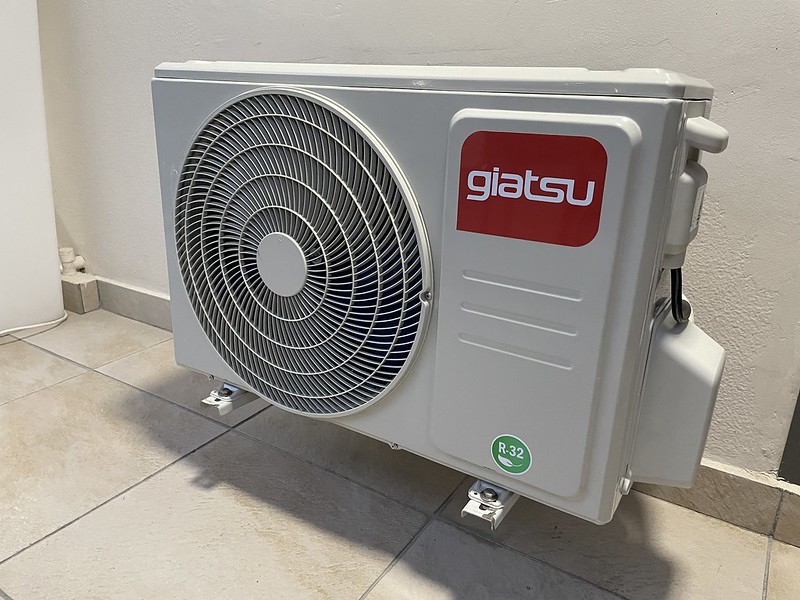Mini-split systems, also known as ductless air conditioners or heat pumps, are a popular choice for heating and cooling homes and buildings due to their energy efficiency, flexibility, and ease of installation. These systems work by circulating air inside the home using a network of supply and return ducts connected to the indoor unit. The indoor unit contains an evaporator coil that absorbs heat from the indoor air, and a blower that circulates the cooled or heated air throughout the room. The outdoor unit, on the other hand, houses a compressor and a condenser coil that releases the heat absorbed from the indoor air.
The Refrigerant Circulation Process
The air circulation in a mini-split system is achieved through a process called refrigerant circulation. The refrigerant, which is a heat transfer fluid, circulates between the indoor and outdoor units through a set of copper tubing lines. This process works as follows:
- Refrigerant Absorption: The refrigerant in the indoor unit absorbs heat from the indoor air, causing it to change from a liquid to a gas.
- Compression: The gaseous refrigerant is then compressed by the compressor in the outdoor unit, increasing its temperature and pressure.
- Heat Dissipation: The compressed, hot refrigerant gas then flows through the condenser coil in the outdoor unit, where it releases the absorbed heat to the outside air, causing the refrigerant to condense back into a liquid.
- Expansion: The liquid refrigerant then passes through an expansion valve, which reduces its pressure and temperature.
- Evaporation: The low-pressure, low-temperature liquid refrigerant then flows back into the indoor unit’s evaporator coil, where it absorbs heat from the indoor air, repeating the cycle.
This continuous cycle of refrigerant circulation is what allows the mini-split system to effectively cool or heat the indoor air.
Air Filtration and Purification
In addition to circulating air, mini-split systems can also improve indoor air quality by filtering out impurities and allergens. The indoor unit typically contains an air filter that traps dust, pollen, and other particles as the air is circulated. Some advanced mini-split systems also offer additional filtration options, such as:
- Activated Carbon Filters: These filters can remove odors, volatile organic compounds (VOCs), and other gaseous pollutants from the air.
- UV Light Purification: UV light can be used to kill bacteria, viruses, and other microorganisms in the air, improving overall air quality.
- HEPA Filters: High-Efficiency Particulate Air (HEPA) filters can capture up to 99.97% of airborne particles, including fine dust, pet dander, and smoke.
These advanced filtration options can significantly enhance the indoor air quality in your home or building, providing a healthier and more comfortable living environment.
Limitations and Ventilation Considerations
While mini-split systems are highly efficient at circulating and conditioning the air within a room or building, they do not bring in fresh air from the outside. The systems only recirculate and condition the air that is already inside the space. If you want to introduce fresh air into your home, you will need to use a separate ventilation system, such as:
- Exhaust Fans: These fans can be installed in bathrooms, kitchens, or other areas to remove stale air and bring in fresh air from the outside.
- Heat Recovery Ventilators (HRVs): HRVs are mechanical ventilation systems that exchange indoor and outdoor air while recovering the heat or coolness from the outgoing air, improving energy efficiency.
- Opening Windows or Doors: Manually opening windows or doors can also help introduce fresh air into the home, but this may not be practical or energy-efficient in all climates.
It’s important to consider your home’s ventilation needs and integrate a suitable solution with your mini-split system to ensure a healthy, comfortable, and energy-efficient indoor environment.
Optimizing Air Circulation
To ensure optimal air circulation and distribution within your home or building, consider the following tips:
- Proper Placement of Indoor Units: Strategically placing the indoor units in the right locations can help ensure even air distribution throughout the space.
- Adjustable Air Louvers: Many mini-split indoor units come with adjustable air louvers that allow you to direct the airflow as needed.
- Fan Speed Control: Adjusting the fan speed of the indoor unit can help regulate the air circulation and temperature in the space.
- Ductwork Design: If your mini-split system uses ductwork, ensure that the ducts are properly sized, sealed, and insulated to minimize air leaks and optimize airflow.
- Regular Maintenance: Regularly cleaning or replacing the air filters and performing other maintenance tasks can help maintain optimal air circulation and system efficiency.
By following these best practices, you can ensure that your mini-split system effectively circulates air throughout your home or building, providing a comfortable and energy-efficient indoor environment.
Conclusion
Mini-split systems are a highly efficient and versatile solution for heating and cooling homes and buildings. By understanding the refrigerant circulation process and the air filtration capabilities of these systems, you can ensure that your mini-split system effectively circulates and conditions the air in your indoor space. However, it’s important to consider the limitations of mini-split systems in terms of fresh air ventilation and to integrate a suitable ventilation solution to maintain a healthy and comfortable indoor environment.
References:
– DIY Solar Forum – What is the best way to circulate mini split heat pump air for the house?
– NJ Air Pros – Everything You Need to Know About Ductless Mini Splits
– Green Building Advisor – Fresh Air for Minisplits
– DIY Stack Exchange – Do split air conditioners like this also ventilate the room?
– Pioneer Mini Split – Can Mini Split Systems Bring Fresh Air into Your Home?

